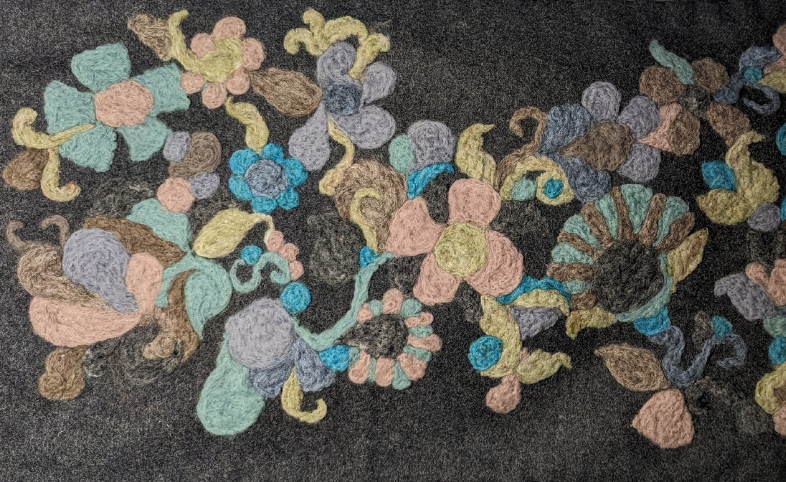
Sharon Chandler Correnty comes from a family who make magic with their hands. In 1948, when her parents were married in Harvard Massachusetts, Black folks were not eligible for mortgages. Her father, only nineteen at the time, used his earnings from a local tannery to buy some land and lumber to build their family home with his own two hands. Sharon grew up watching her mother working at the sewing machine, taking cloth and turning it into beautiful garments and house textiles. Under her needle, plain fabric would be transformed into high fashion for her four daughters. They created a home full of light and love and bright colors which are reflected in Sharon’s tapestries and her handmade upcycled garments. When I met with her, she was draped in textiles, constantly flitting around her studio to pull pieces for my inspection. It is an organized chaos of soft piles of wool, vibrant tapestries, and scrappy, pillowy garments for her clothing brand, Marigold Roots.
As an adult, Sharon’s wide reaching textile practice arose from her expansive approach to teaching art as a public school teacher in her hometown. While she has retired from teaching full time, she still loves to help people learn to make things with their hands. Her needle and wet felted tapestries are an explosion of color and texture, creating narratives of hope, joy, healing, and magic. On May 4th, Sharon will be teaching a needle felting class in person at Tatter. We spoke with her about her practice, her inspirations, and her teaching ethos.
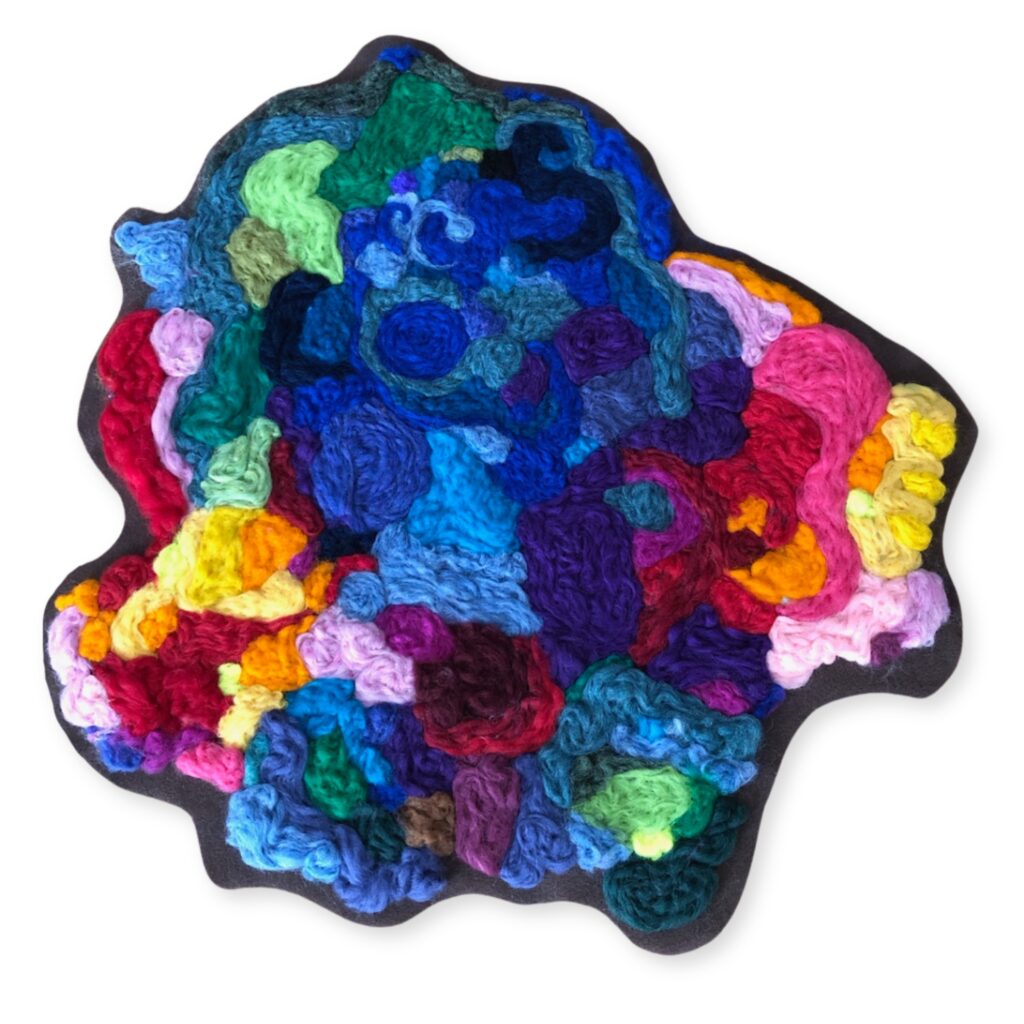
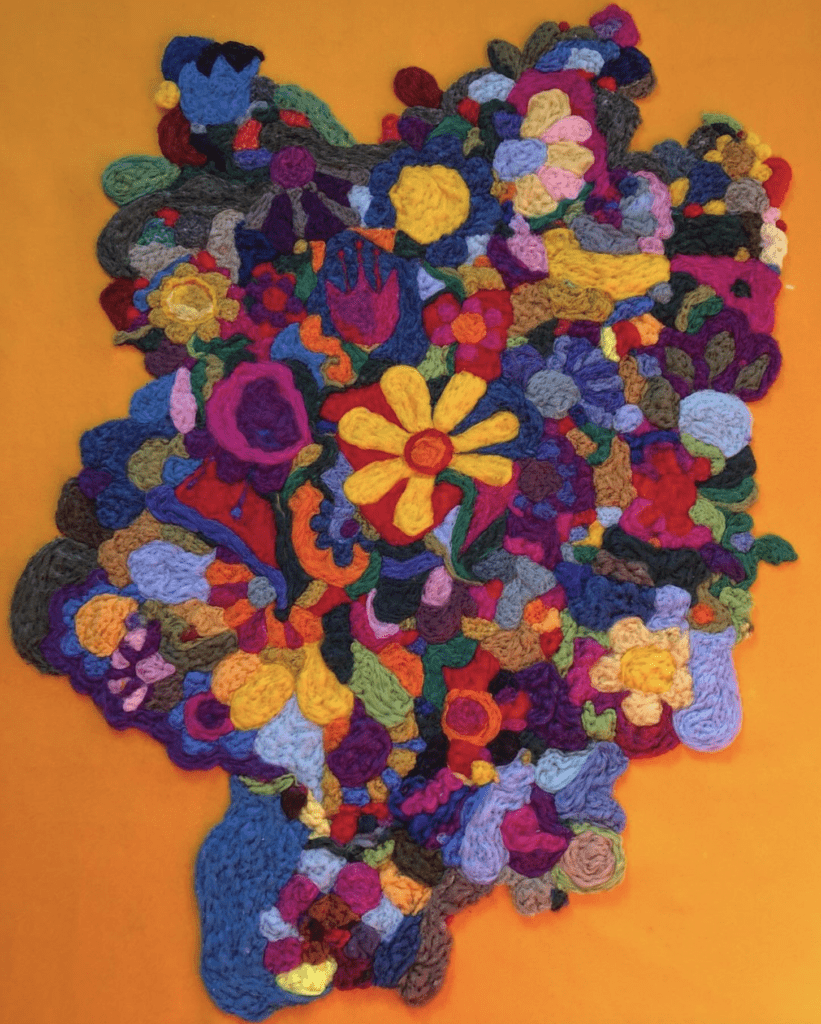
As a slow fashion designer, you reuse textiles as a large part of your practice. How does your needle felting practice fit in with that?
In the early 2000s, I didn’t have a lot of money for holiday gifts. So I picked up one of my daughter’s old sweaters and I started cutting and altering it. She went to boarding prep school, and she was very particular about clothes. So when she absolutely flipped out over the sweater, I started doing this whole project of collecting sweaters and reconstructing and altering them. A local yarn store invited me on a trip to Iceland, where I was introduced to this world of wet felting and needle felting. I found that I gravitate to wool. Not spinning, but wet felting and needle felting. I went from cutting up sweaters to needle felting very large scale tapestries.
What attracted you to felting?
Needle felting helped me process and work through some mental health issues. I battled depression, and I’m very transparent about my mental health. I have used the practice of needle felting as a way to journey through my sadness. Color brings me such joy. I don’t have a prescribed recipe, I just create shape and meander through on the surface of wool. I lean into the colors of how I feel on any given day, and I also lean into subjects that reflect my unique upbringing and the community that I grew up in. I think of it as doing storytelling through abstract work with wool.
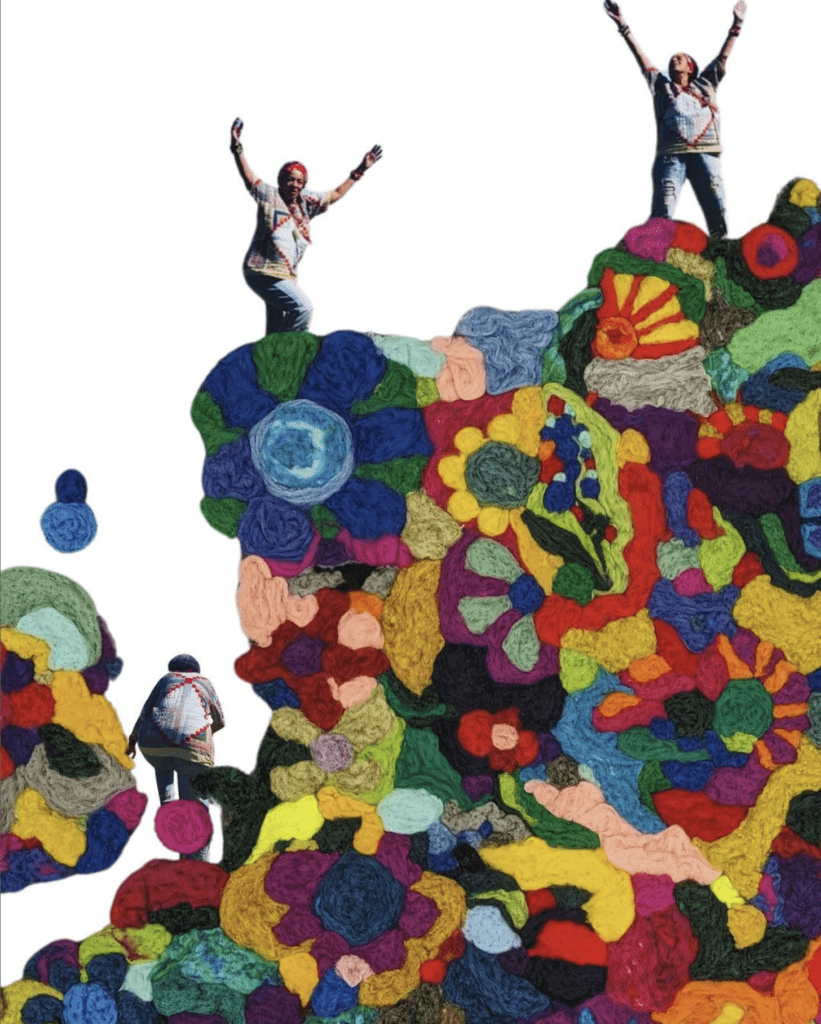
Would you give me an example of the kinds of stories that you tell with your textiles?
I grew up in Harvard, Massachusetts, which is a very rural town with a general store. After my parents were married, while my father and his brothers built the home I grew up in, they lived in a trailer without running water or electricity in front of an apple orchard. My father would always say that some things only happen once in a blue moon. So one of my tapestries is sort of a tribute to my dad with the blue apple next to the blue moon, the tree and the orchard. My work has gone from something very literal, like this one with the identifiable shape, to things that have no shape. It’s where I am emotionally.
When I became an art teacher, I wanted to learn as much variety as possible to expose children to not just drawing and painting but many different mediums. I was really big on hitting up recycle centers. It bothered me that in the district where I taught, we had an enormous budget for art supplies, but the money was going to brand new things. I have a mindset of no waste, or as little waste as possible, and I approach everything that I make that way. For example, my quilt pieces, the ones that sort of put me on the map with British Vogue. I only cut a quilt that lands in my hands really distressed. I don’t cut up quilts that are exhibit worthy, I’ll leave the exposed batting or darn it or add a lace doily or a part of another quilt piece. I try to give intention and integrity to each garment.
Shifting somewhat back to your needle felting practice. When you’re picking the colors for a piece, how do you create a palette?
It’s really funny you should ask me this, because my children always challenge me about my colors. I’ve been into bright colors, and I really just let the piece come together as it does. When I’m delivering the workshop to the participants, I don’t want them to make something that looks like what I make. I want to tap into who they are. Some people feel like they need to use colored pencils and just create some sort of a plan because that’s just their nature and style. And I respect that. That’s not the way I work, but I have that available. Some people will plan and then make something totally different, some people will stick to it fully, some people won’t plan at all. The only thing I want to be sure of is that the student arrives at a place of joy. It’s really about process and encouraging the journey. They’re learning the skill and the application of the material, what the material can do. That’s what matters.
I love that as a teacher you are open to helping people find what their process is, even if that’s a totally different process than the one that makes sense to you.
In order to be a good teacher, you need to meet people where they are. Full inclusion requires exploration. The main thing I do insist on is that I don’t like to see waste. I like to see materials being used in an intentional way that spark joy. My scraps go into my stuffed sculptures, and soon I will be getting outside and dyeing my own wool using the indigo and marigold I have cultivated in my garden. Nothing is wasted, even if I keep a fabric scrap or bit of wool and don’t use it for decades, it will eventually be a part of something else.
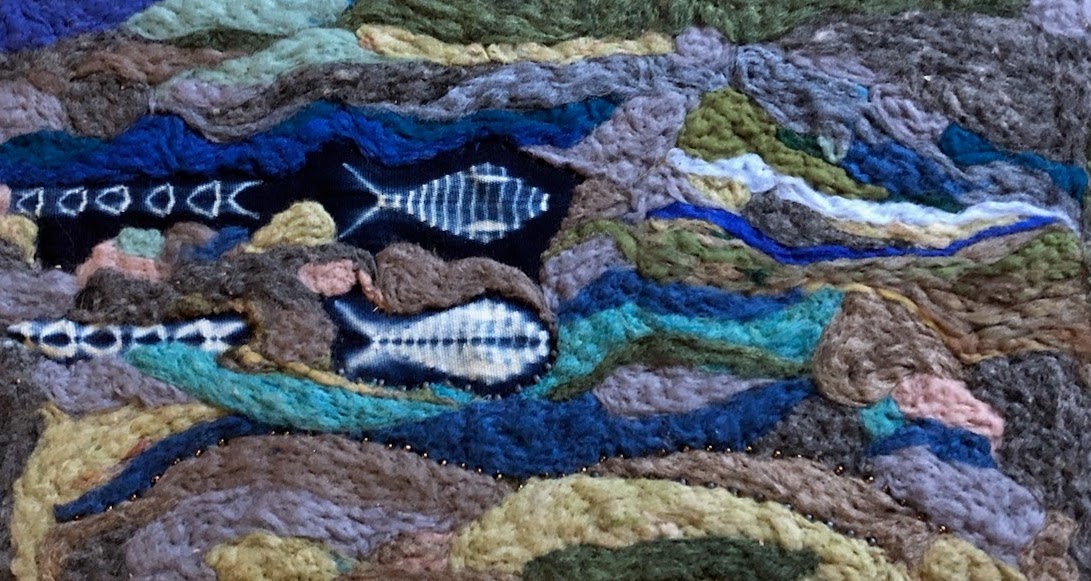
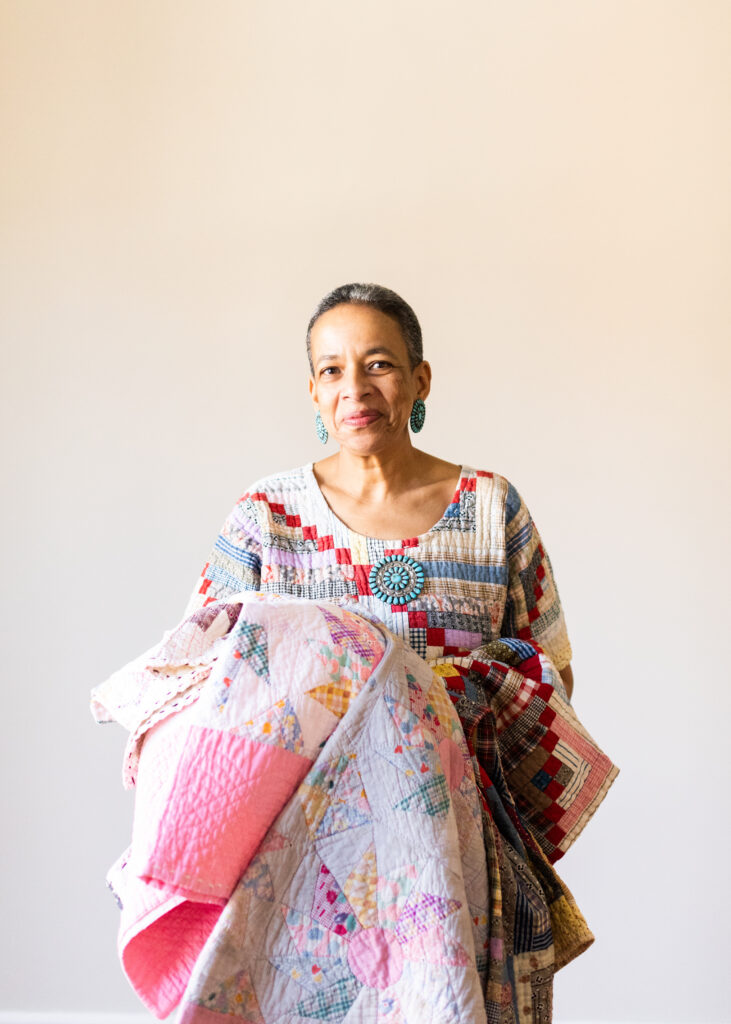
I am Sharon Chandler Correnty, the visionary artist guiding the narrative of Marigold Studio—a space where art emerges as an alchemy of discarded treasures and the untamed beauty discovered in the natural world. Nestled in Pepperell, MA, my life has unfolded as a rich odyssey of continual learning and artistic exploration.
My creative journey, spanning over four decades, is anchored by a Bachelor of Fine Arts in Art Education from the University of Massachusetts Dartmouth and a Master of Education from Fitchburg State University. These qualifications intertwine hands-on artistry with a profound understanding of pedagogy. Notably, I have dedicated the majority of my career to working as a public school art teacher, passionately sharing my love for art with countless students.
In addition to my role as an educator, I consider myself a textile artist, with a particular love for wool and natural dye. My commitment to repurposing and upcycling traces back to my early years in Harvard, MA, influenced by my family’s tradition of creativity. My mother, Gloria Marie Chandler, a skilled clothing designer, sowed the seeds of my passion, introducing me to the intricacies of the sewing machine and the art of design.
Marigold Studio stands as the culmination of my global travels, roadside discoveries, and a discerning eye for the overlooked. My artistic palette comprises cloth, wool roving, paint, clay, beads, yarn, and canvas. Each piece unfolds as a story, intricately woven from textiles, artifacts, and salvaged treasures. Through my work as a textile artist and slow fashion designer, I aim to highlight the importance of sustainability, upcycling, and minimizing waste in the fashion industry, contributing to a more eco-conscious and responsible approach to art and design.
You can find Sharon’s work here.
